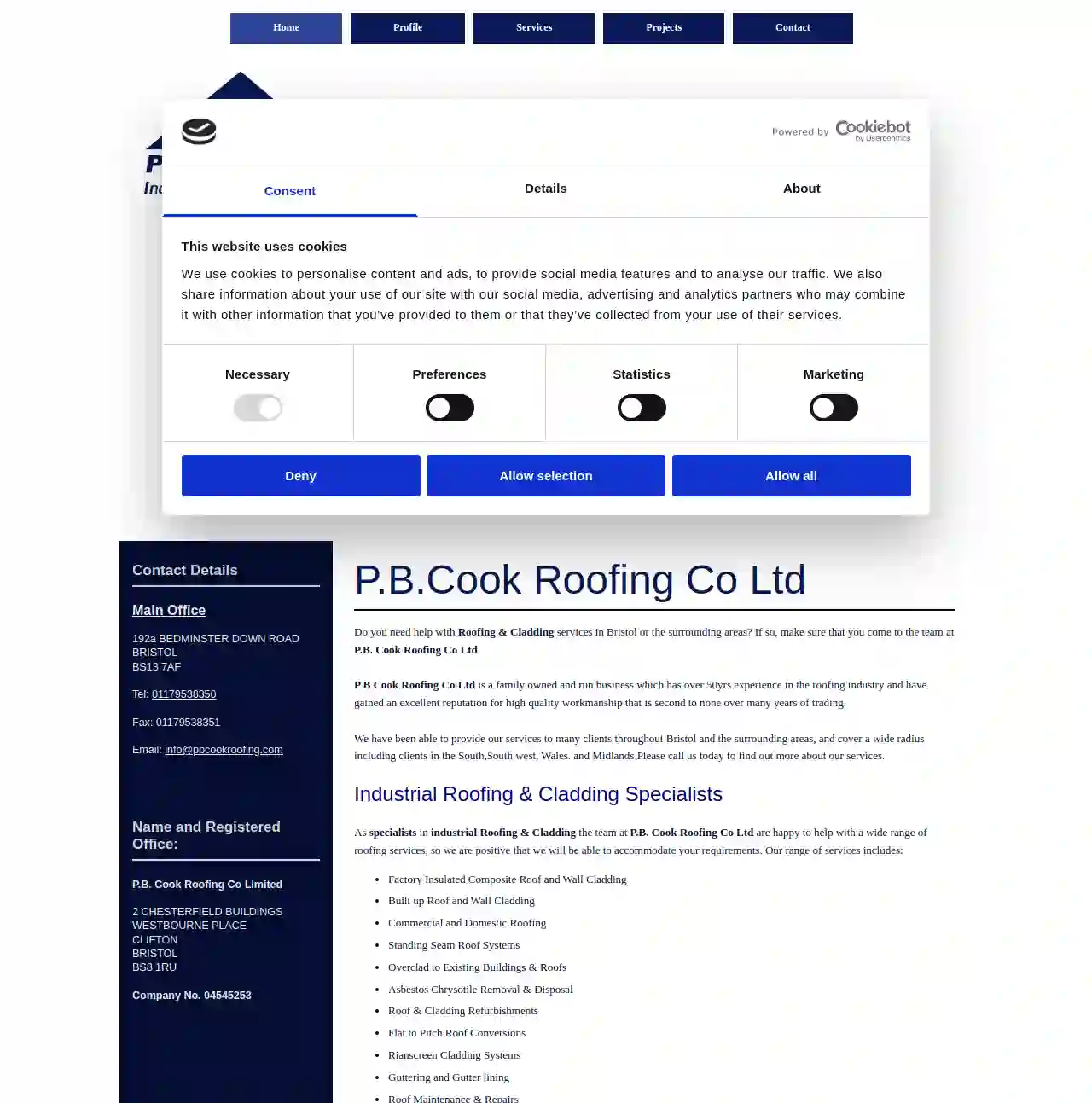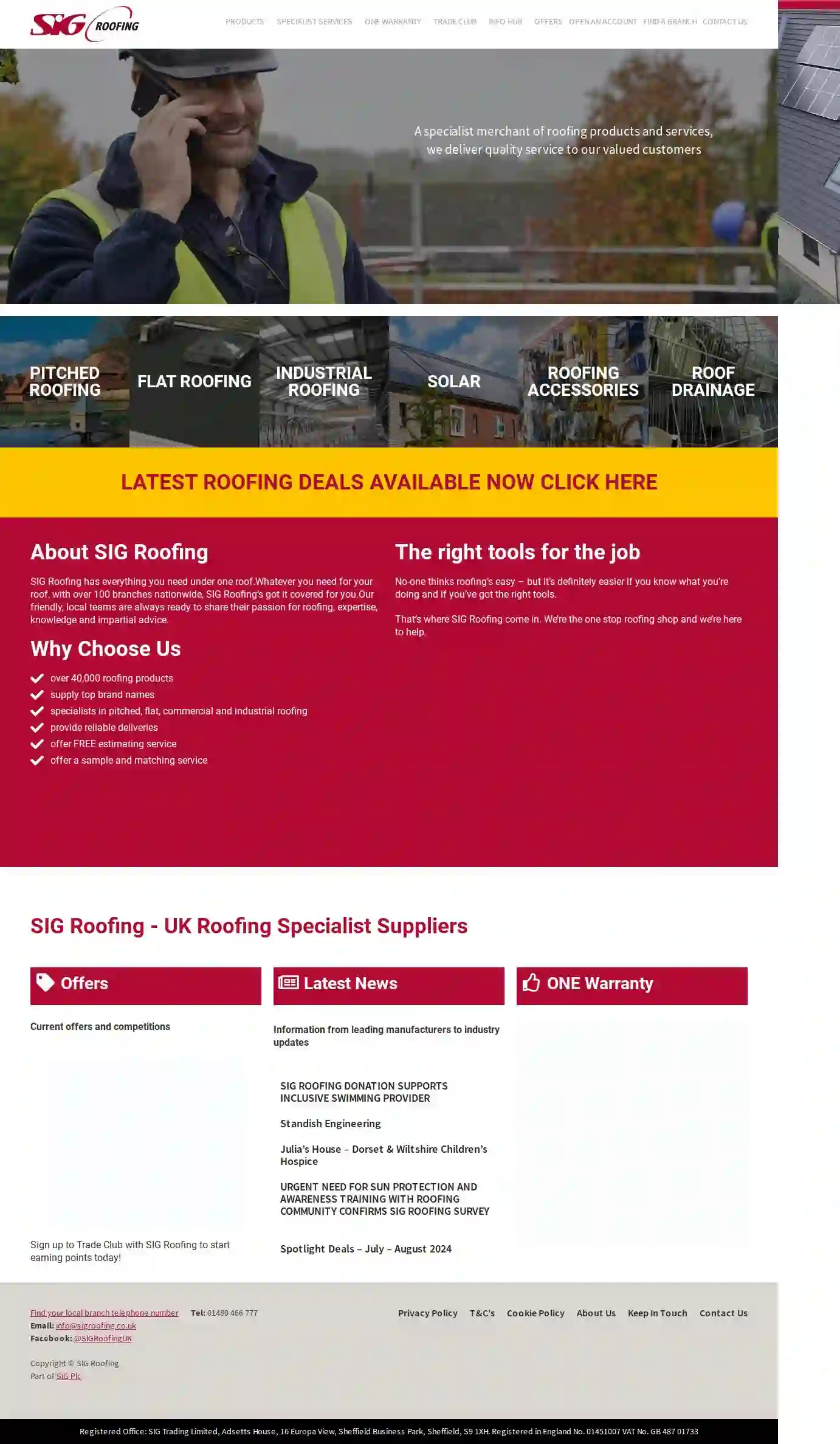Roofing Companies Chepstow
Best Roofing Companies in Chepstow
Receive multiple Roofing Services quotes for your project today! Compare profiles, reviews, accreditations, portfolio, etc... and choose the best service.

J D Roofing
59 reviews81 Glebe Road, Minchinhampton, GL6 9JY, GBJ.D Roofing is a professional roofing company based in Minchinhampton and serving the surrounding areas. With over 10 years of experience, they pride themselves on delivering exceptional customer service and high-quality workmanship at competitive prices. Their reputation is built on word-of-mouth recommendations from satisfied clients, ensuring you're choosing a company with a proven track record. J.D Roofing offers a wide range of roofing services and is committed to providing honest, reliable service for all your roofing needs, no matter the size or complexity of the project. Get in touch today for a free quote on 07795 150 968 or through their contact page.
- Services
- Why Us?
- Testimonials
- Gallery
Get Quote
Phoenix Roofing Ltd
511 reviewsBristol, GBWelcome to Phoenix Roofing Ltd, an established roofing and property maintenance contractor. We provide a complete roofing and home maintenance service in and around Bristol for residential and commercial customers. We can handle all your roofing requirements from small roofing repairs to completing new roofs, flat roofs, and much more. Our skilled staff possess extensive experience in the repair and installation of new roofs, roofing repairs, tiling, chimney refurbishment, flat roofing repairs, UPVC fascias and guttering. All our work is carried out to the very highest standards and is backed up with a full guarantee for total peace of mind. Call us on 07361 066363 for a free no-obligation quote. You will find our service is friendly and accommodating and competitively priced.
- Services
- Why Us?
- Gallery
Get Quote
P.B. Cook Roofing Co Limited
31 reviews192a BEDMINSTER DOWN ROAD, Bristol, BS13 7AF, GBP.B. Cook Roofing Co Ltd is a family owned and run business which has over 50yrs experience in the roofing industry and have gained an excellent reputation for high quality workmanship that is second to none over many years of trading. We have been able to provide our services to many clients throughout Bristol and the surrounding areas, and cover a wide radius including clients in the South, South west, Wales, and Midlands. As specialists in industrial Roofing & Cladding the team at P.B. Cook Roofing Co Ltd are happy to help with a wide range of roofing services, so we are positive that we will be able to accommodate your requirements.
- Services
- Why Us?
- Accreditations
- Gallery
Get Quote
Redclad Roofing
59 reviewsSouth Liberty Lane, Bristol, BS3 2ST, GBRedClad Roofing is a company based in Bristol, UK, specializing in garage roofing replacement, refurbishment, and removal. With over 15 years of experience in the roofing and cladding industry, they offer expert-level services for concrete garages. They are known for their safe and efficient asbestos roof removal and disposal, ensuring peace of mind for their customers. RedClad Roofing understands the importance of a functional garage and aims to create personalized designs that meet individual needs and budgets. They pride themselves on their professionalism, punctuality, and commitment to customer satisfaction.
- Services
- Why Us?
- Accreditations
- Our Team
- Testimonials
- Gallery
Get Quote
SIG Roofing Bristol Ashton Vale
4.323 reviewsNA, GBSIG Roofing is a specialist merchant of roofing products and services, delivering quality service to our valued customers. Established for over 40 years – with branches throughout the UK from Inverness to Plymouth. We have everything you need under one roof. Whatever you need for your roof, with over 100 branches nationwide, SIG Roofing’s got it covered for you. Our friendly, local teams are always ready to share their passion for roofing, expertise, knowledge and impartial advice.
- Services
- Why Us?
- Accreditations
- Our Team
- Testimonials
- Gallery
Get Quote
Roof King Bristol LTD
4.825 reviewsGBRoofking are a family run business of professional, reliable and expert roofers in Bristol. We fix roofs big and small at reasonable prices. If you have a damaged or leaking roof, or need an emergency repair, we can help. Your roof is critical to the safety and security of your property. If you find a leak or damage from bad weather, poor maintenance or old age, you need expert and professional repairs or replacements as soon as possible. Leaving the problem can lead to damp getting into walls, causing mould or even structural damage. Roofking are your expert roofing company in Bristol, offering a wide range of high-quality roofing options at affordable and competitive prices. We work with all types of roofs, including pitched and flat roofs, offering services including urgent repairs, ongoing maintenance or structural surveys for peace of mind. We also offer replacement of valley gutters, rainwater goods, soffits, fascias and parapets, as we are proud to cover a whole range of roofing related work. As one of the leading roofing companies in Bristol, we are knowledgeable, highly skilled and capable tradespeople that will make your roof safe and secure. For peace of mind today, contact Roofking today on 0750 770 9687.
- Services
- Why Us?
- Testimonials
- Gallery
Get Quote- SO
SOMERSET ROOFING
1.54 reviewsThe Old Mill, West Monkton, Unit 1, TA14 8AA, GBSomerset Flat Roofing SW is a leading provider of flat roofing services in Somerset. With years of experience and a team of skilled professionals, we offer a range of services including flat roof installation, repair, and maintenance. Our mission is to provide high-quality, reliable, and affordable flat roofing solutions to our customers. We are fully accredited and insured, and our team is committed to delivering exceptional customer service.
- Services
- Why Us?
- Gallery
Get Quote 
W.probert roof Line Systems
53 reviewsNewport Road, Unit 1, 10-12, Newport, NP10 8AA, GBW. Probert Roofing Line Systems is a family run business with over 25 years experience in the roofing industry. We offer a wide range of roofing services, including new roofs, roof repairs, roof cleaning, and roof coatings. We are fully insured and accredited, and we pride ourselves on providing our customers with high-quality workmanship at competitive prices.
- Services
- Why Us?
- Gallery
Get Quote
Safe cover roofing & build ltd
514 reviewsGBSafe Cover Roofing & Build Ltd is a small, independent roofing company dedicated to providing top-notch roofing solutions for homeowners and businesses alike. With years of experience in the industry, we pride ourselves on delivering excellence in every project, ensuring your roof not only stands the test of time but also enhances the value and aesthetics of your property. What sets us apart is our commitment to quality craftsmanship, a customer-centric approach, reliability, and a comprehensive range of services. From roof inspections and repairs to complete installations and construction, we've got you covered. Whether you need a durable flat roof, the timeless elegance of a tiled roof, or the unparalleled beauty and durability of a slate roof, our team of skilled professionals uses the finest materials and proven techniques to guarantee a leak-free, long-lasting roof. Your satisfaction is our priority, and we work closely with you to understand your roofing goals and budget. We understand the urgency of roofing issues and strive for prompt service and timely project completion.
- Services
- Why Us?
- Testimonials
- Gallery
Get Quote
Ace Roofing Kildare | Ace Roofing Ireland
4.944 reviewsKilbelin, Newbridge, 1662 Páirc Mhuire, W12 CF98, GBAce Roofing & Guttering is a family-run business based in Dublin, with over 30 years of experience providing professional roofing services to clients. We are fully licensed and certified, offering a wide range of services from general roof repairs to exterior decorating. Our team of expert roofers is dedicated to providing high-quality workmanship and competitive rates, ensuring complete customer satisfaction. We are committed to delivering a truly helpful, friendly, and reliable service, backed by a 25-year guarantee on all our work.
- Services
- Why Us?
- Testimonials
- Gallery
Get Quote
Over 12,314+ Roofing Contractors registered
Our roofing pros operate in Chepstow & surroundings!
Roofyng.co.uk has curated and vetted the Best Roofers arround Chepstow. Find the most reliable contractor today.
Frequently Asked Questions About Roofing Companies
- Style: Consider your home's architectural style and choose a roofing material that complements it.
- Climate: Factor in your local climate conditions. Some materials perform better in extreme heat, cold, or high winds than others.
- Budget: Roofing materials have a wide range of costs. Determine your budget and choose materials that fit your financial constraints.
- Durability and Lifespan: Assess the expected lifespan and durability of different materials.
- Energy Efficiency: Choose materials with good insulation and reflectivity properties to improve your home's energy efficiency.
- Safety First: Avoid going onto the roof during a storm, as it's dangerous.
- Document the Damage: Take photos and videos of the damage for insurance purposes.
- Contact Your Insurance Company: Report the damage to your insurance company as soon as possible to initiate a claim.
- Temporary Repairs: If safe, address any immediate leaks using buckets or tarps to minimize further damage.
- Contact a Roofing Contractor: After the storm, have a qualified roofing contractor inspect the roof and provide a repair estimate.
- Experience: Companies with a solid track record and years of experience in the industry.
- Licensing and Insurance: Verify they are properly licensed to operate in your area and carry adequate insurance to protect you from liability.
- Certifications: Look for certifications from reputable organizations, demonstrating expertise in specific roofing materials or techniques.
- Positive Reviews: Check online reviews and testimonials from previous customers.
- Professionalism: Choose a company that communicates clearly, provides detailed estimates, and has a courteous and responsive team.
- Age: If your roof is nearing or exceeding its expected lifespan, it's wise to consider replacement.
- Multiple Leaks: Several leaks or leaks that reappear after repairs suggest a widespread problem.
- Extensive Damage: Large areas of damaged, missing, or deteriorated roofing materials might be too costly or difficult to repair effectively.
- Sagging or Structural Issues: Sagging, deflection, or other structural issues indicate a compromised roof that needs replacement.
- Granule Loss (Asphalt Shingles): Significant granule loss indicates weathering and reduced protection.
- Curling or Buckling Shingles: Signifies age or improper ventilation.
- Increased Energy Bills: A poorly insulated roof can lead to higher heating and cooling costs.
How do I choose the right roofing materials for my home?
What should I do if my roof is damaged in a storm?
How do I find a good roofing company?
What are the signs that my roof needs to be replaced?
How do I choose the right roofing materials for my home?
- Style: Consider your home's architectural style and choose a roofing material that complements it.
- Climate: Factor in your local climate conditions. Some materials perform better in extreme heat, cold, or high winds than others.
- Budget: Roofing materials have a wide range of costs. Determine your budget and choose materials that fit your financial constraints.
- Durability and Lifespan: Assess the expected lifespan and durability of different materials.
- Energy Efficiency: Choose materials with good insulation and reflectivity properties to improve your home's energy efficiency.
What should I do if my roof is damaged in a storm?
- Safety First: Avoid going onto the roof during a storm, as it's dangerous.
- Document the Damage: Take photos and videos of the damage for insurance purposes.
- Contact Your Insurance Company: Report the damage to your insurance company as soon as possible to initiate a claim.
- Temporary Repairs: If safe, address any immediate leaks using buckets or tarps to minimize further damage.
- Contact a Roofing Contractor: After the storm, have a qualified roofing contractor inspect the roof and provide a repair estimate.
How do I find a good roofing company?
- Experience: Companies with a solid track record and years of experience in the industry.
- Licensing and Insurance: Verify they are properly licensed to operate in your area and carry adequate insurance to protect you from liability.
- Certifications: Look for certifications from reputable organizations, demonstrating expertise in specific roofing materials or techniques.
- Positive Reviews: Check online reviews and testimonials from previous customers.
- Professionalism: Choose a company that communicates clearly, provides detailed estimates, and has a courteous and responsive team.
What are the signs that my roof needs to be replaced?
- Age: If your roof is nearing or exceeding its expected lifespan, it's wise to consider replacement.
- Multiple Leaks: Several leaks or leaks that reappear after repairs suggest a widespread problem.
- Extensive Damage: Large areas of damaged, missing, or deteriorated roofing materials might be too costly or difficult to repair effectively.
- Sagging or Structural Issues: Sagging, deflection, or other structural issues indicate a compromised roof that needs replacement.
- Granule Loss (Asphalt Shingles): Significant granule loss indicates weathering and reduced protection.
- Curling or Buckling Shingles: Signifies age or improper ventilation.
- Increased Energy Bills: A poorly insulated roof can lead to higher heating and cooling costs.